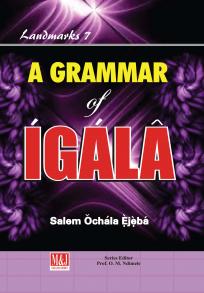Livrel(PDF, HTML) 268p.
(Language and Linguistics)
ISBN: 9789785420876
The book establishes 28 phonemic consonants and 7 vowels, as well as lexical and grammatical tones in Igala. It shows the canonical syllable types as V and CV with no complexity, and relates resyllabification to the retiming of segments as tone bearing units and the duration of their mora. The work discusses nine word classes, as well as ideophones and clitics in Igala. There are splitting verbs of various structures and fully-fledged pronouns with morphologically toneless clitic counterparts that are toned in their syntactic context, among other elements of the Igala morphology. The work establishes clitics as generally bearing the grammatical tones of various categories as a result of their morphological tonelessness and their availability for post-lexical tone assignment. It also accounts for the generally complex interaction of clitics and tones in the organisation of the morphosyntax and the tone-syntax interface. Igala has both verbal and nominal extensional affixes with various semantic features. Some interesting discussions in the Igala syntax include the structural and functional types of serial verb constructions, the detransitivizing process of verb movement in object demoting structures, coreferentiality in relativised constituents and the future/non-future temporal distinction. Complementary binominals are conjoined with a specified binominal morpheme, and their rigidly irreversible structures have implications in the Igala semantics. The binominals demonstrate a grammatically specified pattern defined over a conceptual space, showing the network among conceptual categories, such as kinship, marital, social, hunter-hunted, more-less and cause-effect relationships as reflected in the Igala grammar.








